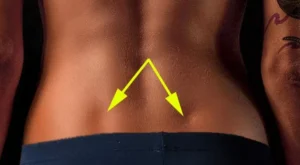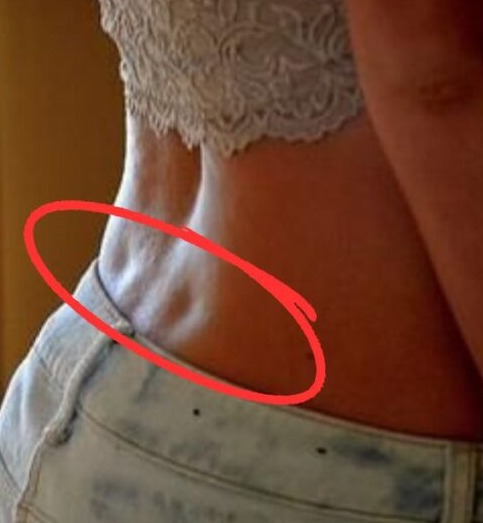In the realm of physical beauty, there exists a fascinating phenomenon that has captivated human imagination for centuries. The small indentations on the lower back, formally known as fossae lumbales laterales, have been affectionately dubbed the “dimples of Venus.” These enigmatic dimples, situated near the top of the buttocks, have been a subject of admiration and intrigue, particularly in the context of physical attractiveness.

The origin of these dimples lies not in muscle structure, but rather in the anatomy of the sacroiliac joint. The joint, which connects the sacrum and iliac spine of the pelvis, creates a shallow depression in the skin, resulting in the appearance of dimples. Interestingly, the presence of these dimples is entirely genetically determined, making them an inherent aspect of one’s physical characteristics.

While the “dimples of Venus” are more commonly associated with women, where they contribute to the coveted hourglass figure, men can also possess a similar feature, known as “Apollo’s dimples.” These tiny depressions are admired for their symmetry and uniqueness, and have long been linked to an idealized conception of physical beauty.
The appeal of the “dimples of Venus” transcends gender boundaries, as they add to the natural curve of the lower back, creating the illusion of a well-proportioned, sculpted figure. In popular culture, these dimples are often the object of admiration and envy, symbolizing elegance and sensuality.
Intriguingly, the “dimples of Venus” are sometimes compared to other desirable physical characteristics, such as a prominent jawline or well-defined abs. However, unlike these features, which can be developed through exercise and muscle toning, the “dimples of Venus” are an inherent aspect of one’s anatomy.
For generations, the “dimples of Venus” have been revered as a symbol of beauty, appreciated for their subtle yet unique contribution to the human form. Their association with ancient gods and goddesses attests to the enduring fascination with the human body’s symmetry and beauty. These natural imperfections, which some individuals possess effortlessly, serve as a poignant reminder of the diverse and intricate nature of physical attractiveness.


